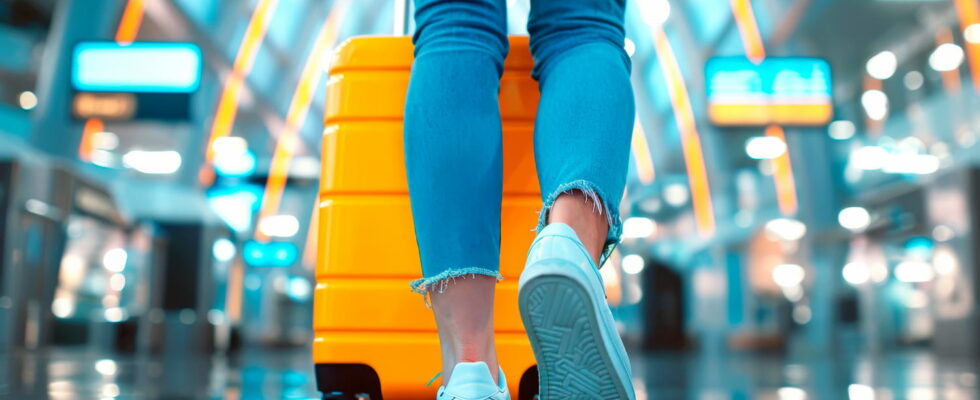You can also do it on the train, or by car if the journey lasts several hours.
Anyone who has ever flown knows that the legs can suffer from altitude, especially over long distances. When the hours of travel add up, there is a risk of venous thrombosis or “phlebitis”. This phenomenon occurs when a blood clot forms in the veins due to the immobilization of the legs and changes in atmospheric pressure. The latter plays a role in activating clotting.
Phlebitis causes swelling of the leg and even pain in the calf. “From 5 hours of travel the risk begins to be significant” explains Dr. Audrey Stansal, vascular physician at the American Hospital of Paris. “And the more hours you work, the more the risk of phlebitis increases in turn.” Phlebitis is not serious if diagnosed early. The goal is to avoid massive phlebitis (or massive thrombosis), which can cause pulmonary embolism. “It’s rare but it can happen and it’s called ‘gateway syndrome’.” Pulmonary embolism occurs when the clot formed in the leg migrates to the lungs. This happens when the person starts walking again.Not all passengers on an airplane will get thrombosis” reassures Dr. Stansal. Who is particularly at risk then?
- People with a history of thrombosis
- People with cancer
- People with obesity
- People with blood clotting disorders
- People on hormone therapy
- People traveling with a cast/splint
- Pregnant women.
The veins in the legs have the difficult task of pumping blood up to the upper body, fighting against gravity. The people mentioned above have risk factors that can prevent the veins from doing their job. It is important to plan your trip and prevent thrombosis when you know you are at risk. The health professional advises consulting your doctor before a long trip. “The only medicine that prevents thrombosis is an anticoagulant. It can be prescribed in the form of a heparin injection (syringe) or oral tablets.” Compression stockings can help but only in cases of simple venous insufficiency and provided that you choose the right model, otherwise you risk creating a “tourniquet effect”. Since dehydration increases the risk of thrombosis, it is important not to forget to drink regularly throughout the journey. Finally, getting up and walking down the aisle of the plane activates the circulation of the veins in the legs. But since this is not always possible, Dr. Stansal teaches us an easy exercise to do from your seat.
“Every 30 minutes to 2 hours”
To activate venous return, it is possible to mime the walking movement while remaining seated, as if you were on a stepper with pedals. Your feet are parallel:
- Imagine pressing the right pedal with your right foot
- The right pedal goes down while the left pedal goes up.
- Then press the left pedal with your left foot.
- The left pedal goes down while the right pedal goes up.
It’s like you’re constantly going up and down stairs. “This exercise does not yet have scientific data in aircraft, but it is used to heal venous ulcers by recreating the movement of the venous pump”says Dr. Stansal. On a long flight, “Every 30 minutes to 2 hours, try to move your legs for 3 to 5 minutes, alternating between pedaling and walking in the aisles of the plane.”she concluded.
Thanks to Dr. Audrey Stansal, vascular physician at the American Hospital of Paris.
